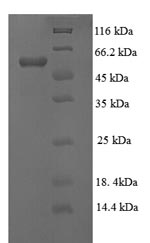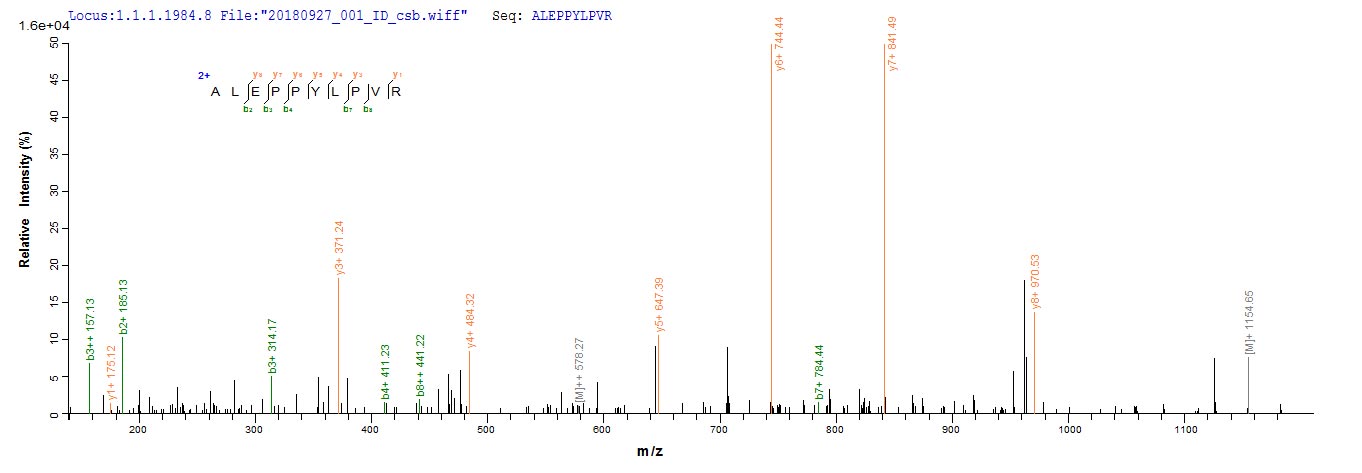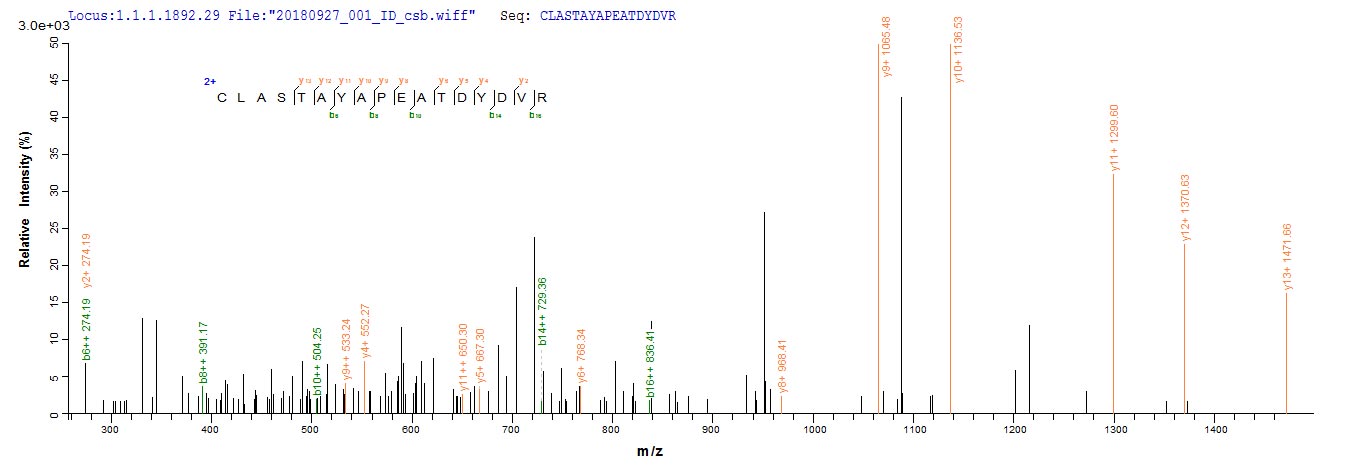Thanks for your inquiry.
Recombinant Human Lysyl oxidase homolog 1(LOXL1),partial
CSB-EP013040HU >> E.coli
Expression Region: 106-574aa; Partial.
Tag information:N-terminal 6xHis-tagged.
Sequence:
VGSDTVRGQARHPFGFGQVPDNWREVAVGDSTGMARARTSVSQQRHGGSASSVSASAFASTYRQQPSYPQQFPYPQAPFVSQYENYDPASRTYDQGFVYYRPAGGGVGAGAAAVASAGVIYPYQPRARYEEYGGGEELPEYPPQGFYPAPERPYVPPPPPPPDGLDRRYSHSLYSEGTPGFEQAYPDPGPEAAQAHGGDPRLGWYPPYANPPPEAYGPPRALEPPYLPVRSSDTPPPGGERNGAQQGRLSVGSVYRPNQNGRGLPDLVPDPNYVQASTYVQRAHLYSLRCAAEEKCLASTAYAPEATDYDVRVLLRFPQRVKNQGTADFLPNRPRHTWEWHSCHQHYHSMDEFSHYDLLDAATGKKVAEGHKASFCLEDSTCDFGNLKRYACTSHTQGLSPGCYDTYNADIDCQWIDITDVQPGNYILKVHVNPKYIVLESDFTNNVVRCNIHYTGRYVSATNCKIVQS
As you requested that the buffer be “10mM MES, pH 6.0 or 50mM Sodium borate buffer, pH 8.2 without any EDTA and DTT.”
Sorry, as we haven't tried this buffer before, we don't have raw material for these two kinds of buffer, is it possible for you to accept any other buffer that without any EDTA and DTT ?The final buffer will be determined during the manufacturing process.
We produced CSB-EP013040HU recently, the buffer is 100 mM Tris-HCl, 0.4 M Arg, pH 8.0, 20% glycerol,we can send the COA for your reference.








